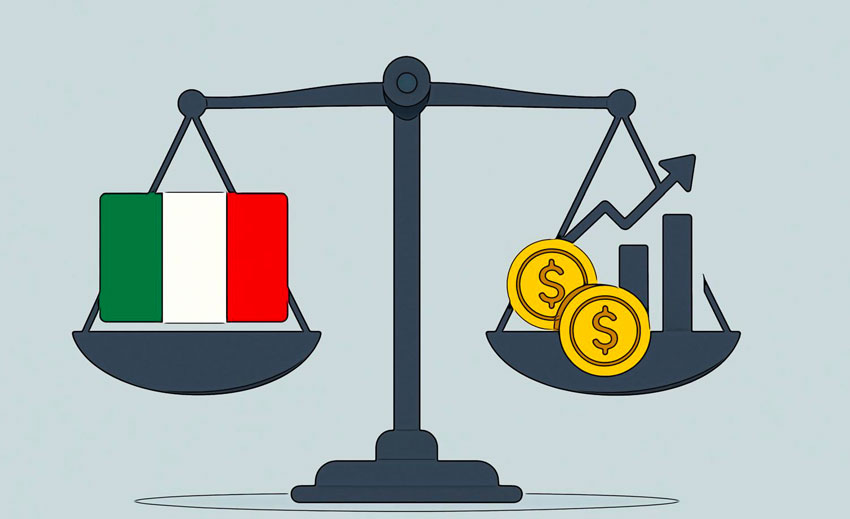La lettura della situazione dell’occupazione in Italia è estremamente complessa. Proclami trionfalistici così come visioni semplicistiche o catastrofiche non sono nell’interesse del Paese. Provo a mettere alcuni punti fermi.
Statisticamente viene considerato occupato chi svolge almeno un’ora di lavoro retribuito nella settimana in cui viene effettuata la rilevazione.
Il numero degli occupati, ( nb: nel senso statistico sopra descritto) registra un trend in crescita anche se nei giorni scorsi ISTAT ha rivisto al ribasso i dati dell’ultimo anno, riducendoli di circa 120.000 unità. La tendenza positiva persiste, ma è stata ridimensionata.
Basarsi sul numero degli occupati per valutare la situazione dell’occupazione, è fuorviante, servono almeno altri due dati: a) il numero totale delle ore lavorate nell’economia: nel 1° trimestre 2025 sono aumentate del 18% rispetto il 2021; b) il numero di ore lavorate da ciascun occupato, che invece sono aumentate solo del 3,7% nello stesso periodo. Concretamente, quindi, credo che tra questi due dati si possa collocare una misura indicativa della crescita dell’occupazione nel periodo 2021-2025. La incoerenza del dato a) con il dato b) e con la stagnazione del Pil è ciò che dovrebbe far riflettere.
Ma questi sono solo numeri da addetti ai lavori, ciò che conta è avere una occupazione con prospettive di stabilità, se non di crescita, e che consente una vita decorosa. Visto il Pil sostanzialmente stagnante, è difficile immaginare incrementi in termini di ore lavorate per ciascun occupato e la crescita modesta del PIL si riflette in salari stagnanti se non negativi in termini reali, cioè al netto dell’inflazione, particolarmente alta tra il 2022 e il 2023. Sul punto, il salario minimo per legge mi ricorda tanto l’abolizione della povertà per decreto. L’unico modo sostenibile per far crescere PIL, salari e produttività è una occupazione “qualificata”. Cioè nuovi occupati altamente istruiti e/o specializzati, che operano in settori ad alta intensità tecnologica o con valore aggiunto elevato. Invece l’Italia investe meno dei suoi competitors in istruzione ed è agli ultimissimi posti tra i paesi sviluppati per numero di laureati.
- Economista
Understanding the employment situation in Italy is extremely complex. Triumphalistic proclamations, as well as simplistic or catastrophic visions, are not in the country’s interest. I’ll try to establish a few key points.
Statistically, employed people are considered those who perform at least one hour of paid work in the week in which the survey is conducted.
The number of employed people (note: in the statistical sense described above) shows an upward trend, although in recent days ISTAT has revised its figures downwards for the last year, reducing them by approximately 120,000. The positive trend persists, but has been scaled down.
Relying on the number of employed people to assess the employment situation is misleading; at least two other data points are needed: a) the total number of hours worked in the economy: in the first quarter of 2025, this increased by 18% compared to 2021; b) the number of hours worked by each employed person, which instead increased by only 3.7% in the same period. Concretely, therefore, I believe that between these two figures we can locate an indicative measure of employment growth in the 2021-2025 period. The inconsistency of data a) with data b) and with the stagnation of GDP is what should give pause for thought.
But these are just figures for insiders; what matters is having employment with prospects of stability, if not growth, and that allows for a decent living. Given the essentially stagnant GDP, it’s difficult to imagine increases in terms of hours worked per employee, and modest GDP growth is reflected in stagnant if not negative wages in real terms, that is, net of inflation, which will be particularly high between 2022 and 2023. On this point, the legal minimum wage reminds me a lot of the abolition of poverty by decree. The only sustainable way to increase GDP, wages, and productivity is “skilled” employment. That is, new, highly educated and/or specialized workers working in highly technological or high-value-added sectors. Italy, however, invests less than its competitors in education and is among the lowest in developed countries in terms of the number of graduates.
- Economist


